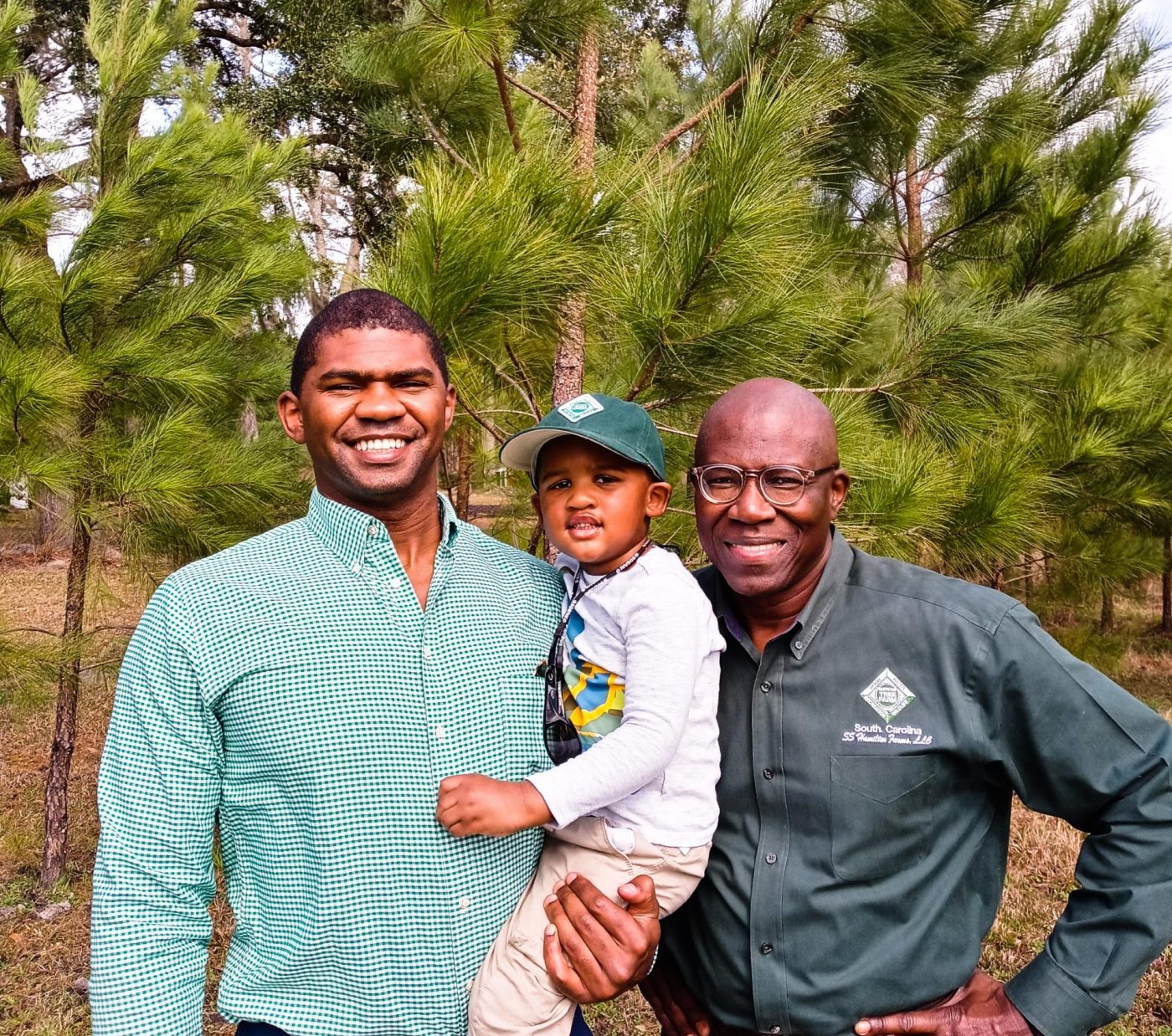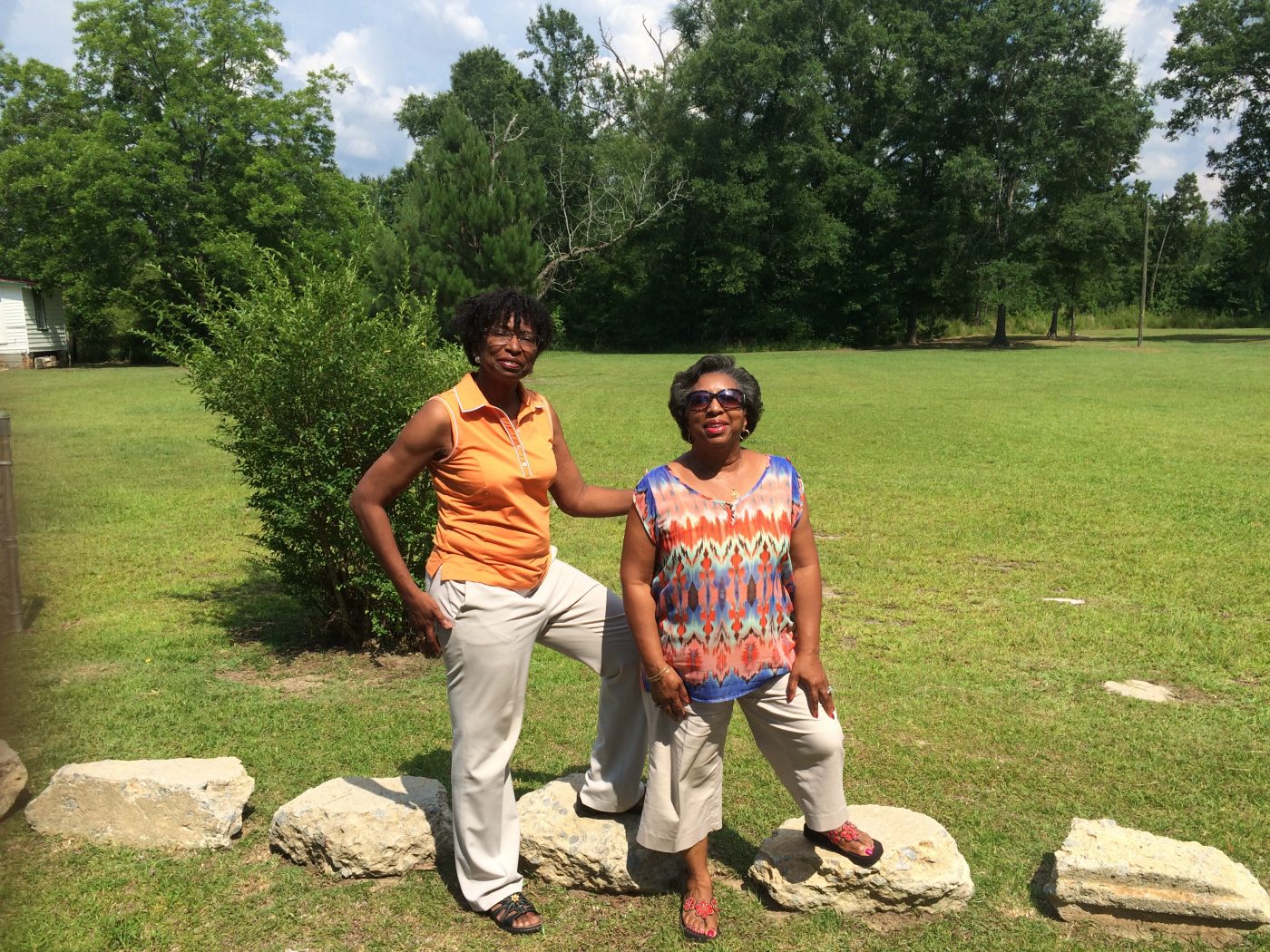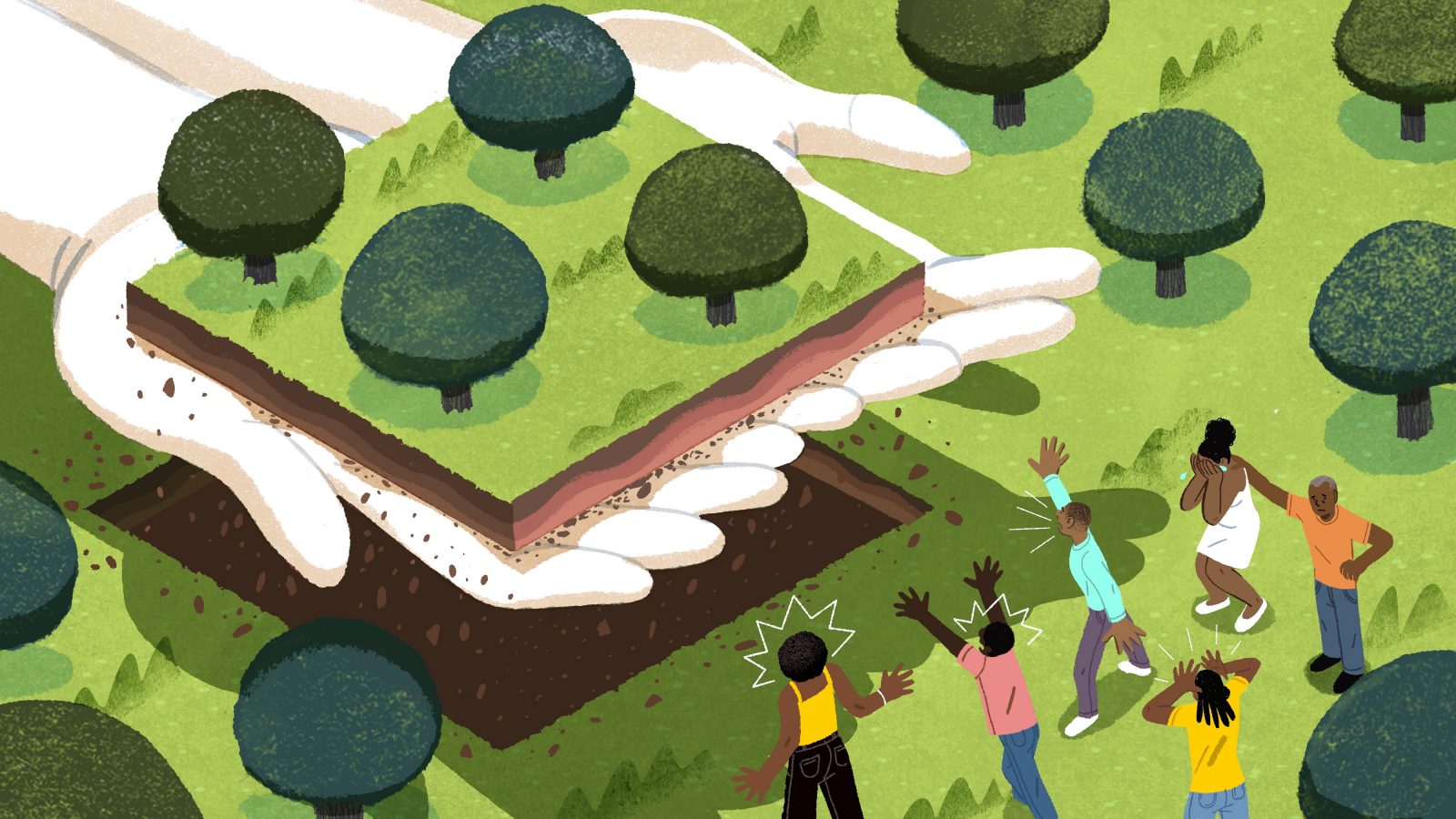Joe Hamilton loves delving into his family history, although that wasn’t always the case. His interest emerged in 2007 when, a few years before retiring from the Defense Department, he began visiting his county register of deeds office, examining gravestones and deciphering a genealogy written in the pages of an old Bible. He hoped to prove, once and for all, that he and his kin own the small piece of South Carolina that had been in the family since 1874.
At the time, Hamilton shared 44.4 acres in the town of Green Pond with seven relatives. They’d inherited the land — all that remained of the 888-acre plantation whittled down over the years by theft and bartering — from their formerly enslaved great-grandfather, Stephen Cunningham.
It took Hamilton three years to gather enough information to prove that the eight of them were Cunningham’s heirs. He hired an attorney, who, after no small effort, cleared the title and settled the matter in the eyes of the law. The family opted to divvy up the parcel, giving Hamilton a lion’s share of 10 acres and everyone else five or so. He and his wife, Blanche, bought an adjacent tract and opened S.S. Hamilton Farms (named for his parents, Steve and Sallie) to grow loblolly pine trees.
Hamilton’s experience is an example of what anyone holding heirs’ property might face. The term applies to land that’s been passed from one generation to the next without a will or other legal document proving ownership. Beyond not being able to build on or develop the land, landowners must have the approval of all relatives before selling or mortgaging it. They’re also shut off from loan access, disaster relief, and other benefits. What’s more, developers can take the land through court-ordered sales.
Heirs’ property is especially prevalent among Hispanic populations in the Southwest, Indigenous communities out West (where it’s known as fractional land), and throughout Appalachia. But the phenomenon disproportionately affects African American families throughout the South, accounting for an estimated one-third of all Black-owned land. The Department of Agriculture has called heirs’ property “the leading cause of Black involuntary land loss,” and notes that it led to a 90 percent decline in Black-owned farmland nationwide between 1910 and 1997. In Mississippi alone, to offer one example, the current value of the land lost in that time is roughly $6.6 billion. Policymakers and advocates hope to rectify some of this injustice through legislation. Organizations like the Center for Heirs’ Property Preservation in South Carolina guide landowners through the process of proving ownership, planning estates, and learning how to manage their land for the benefit of their families and the environment. The center encourages people to take up forestry; all those trees soak up a lot of CO₂ and provide income in a state with a thriving timber industry. “Once you’ve got that clear title, you can generate wealth — not just for now, but for future generations,” says Jeffrey Winget, the nonprofit’s director of communications.
Untold numbers of Black Americans became landowners following the Civil War when the government handed over some 20 million acres, mostly in the South, under the Homestead Act. Three years later, Union General William Sherman promised formerly enslaved people “40 acres and a mule.” (President Andrew Johnson rescinded that, though.) By 1920, Black families owned 14 percent of all farmland in the U.S., a figure that’s fallen to less than 2 percent today.
Heirs’ property played no small part in this loss. The first generation of Black landowners who died in the early 20th century often left their property to children and spouses through informal transfers. Those parcels continued changing hands, often with the original landowner’s name still listed on the deed, which made proving ownership increasingly difficult as the years went on.

Much of the land loss has occurred since 1961, when the Kennedy Administration established a USDA loan program to assist farmers. The program was administered by locally elected authorities who often denied loans to disenfranchised Black farmers, particularly if they could not prove ownership. (They also granted far more generous terms to white farmers.) Even now, folks who can’t prove ownership are denied farming loans, foreclosure protection, and disaster relief. Predatory developers can use legislative loopholes like the Torrens Act to buy one heir’s interest and force land sales in court.
Resolving land ownership issues can take years and cost thousands. Clearing a title requires tracing back the family tree, performing land surveys, and conducting exhaustive searches of myriad documents. Navigating such complexities often requires the help of a lawyer, and those specializing in estate and heirs’ property cases are few and far between. “Many attorneys shy away from any type of heirs’ property situation because it can bog you down,” Hamilton says. “It is a quagmire, really.”
Getting over all those hurdles is no guarantee of success. Any heir can challenge the proceedings, risking a court-ordered sale, where the land might sell for a fraction of its market value.
The Coastal Community Foundation made assisting people through this arduous process a priority when it launched what would become the Center for Heirs’ Property Preservation (CHPP) in 2005. The goal was to foster economic development by helping people retain ownership of their land. The CHPP provides everything from educational seminars and free legal assistance to land surveys. It has helped 280 families in 22 counties throughout South Carolina’s low country retain their land. For those who are unsure what to do with their property or unable to cover the taxes on it, the center offers forestry-management training in a state where timber means big business. “Chances are, if you own the land, there’s trees on it,” Winget says.
Working alongside groups like the Sustainable Forestry and African American Land Retention Network (SFLR), the CHPP has helped folks manage nearly 40,000 acres. Many landowners now run tree farms, selling lumber or biofuel chips with an eye toward building intergenerational wealth.
Yvonne Cooper Knight-Carter and her sister Eleanor Cooper Brown didn’t have to deal with the hassle of sorting out heirs’ property, but they weren’t sure what to do with the land they’d inherited in Moncks Corner in 2008. Their great-great-grandfather acquired the land, about an hour north of Charleston, more than 150 years ago, and the family has raised crops like wheat and tobacco. “We were all aware of the potential,” says Cooper Brown, who worked in biomedical research before turning to tree farming.
The two were looking at ways of actively managing the land when they got wind of the CHPP. “I wasn’t quite sure that this wasn’t too good to be true,” says Knight-Carter, who was a school principal in New York City before returning home to the Palmetto State. She and her sister spent about three years attending seminars and touring tree farms with folks from the CHPP and SFLR before deciding to launch their tree farm, Broadaxe Branch Partners.
Their spread covers 100 or so acres, and they’ve dedicated 85 acres to loblolly pines. The rest is set aside for wildlife habitat, hunting, and farmland leased to others. The sisters are planting pollinators and investigating carbon storage. The farm provides some income, but more than that, it preserves the family legacy. The sisters had helped their paternal grandfather work the land as children. Decades later, Knight-Carter’s grandson planted the first loblolly pine on the property. He was 3. “That’s something for him to remember and understand that the trees are here for our benefit,” she says. “That’s the legacy that we want to continue and pass on.”

Knight-Carter has since become the Center for Heirs’ Property Preservation board chair and an example of what others can do with their land. She’s often telling people to make sure they have a will, and she has testified before Congress about the 2018 farm bill — legislation that included provisions to help heirs’ property owners qualify for USDA assistance and an amendment allocating $5 million toward promoting the creation of intergenerational wealth.
That policy represents just one effort to address the problem. Eighteen states have adopted some version of the Uniform Partition of Heirs Property Act since it was written in 2010. (South Carolina passed it in 2016.) The law protects families from those who try to force them into selling their land. The bill is pending in six more states, with others like North Carolina planning to take it up within the next few years. More than a few big-name politicians, including Senators Cory Booker, Elizabeth Warren, and Kirsten Gillibrand, have announced legislation that would provide Black farmers with land grants, and the Biden Administration has signaled its intention to address the history of discrimination against Black farmers, most recently with the COVID-19 relief bill cancelling $4 billion of debt for farmers historically facing prejudice.
Joe Hamilton supports such measures but plans on taking a more hands-on approach. In the years since he planted the first tree on what’s since become a thriving farm, Hamilton has joined the Woodland Operating Committee with the American Forest Foundation and become a tireless advocate for sustainable agriculture. He regularly provides tours of his operation to local youth and makes a point of showing them the map in his foyer of the plantation from which his land was carved.
All that digging through archives, seeking the evidence that would prove his family owned the land his great-grandfather tended, revealed something else. “I love taking the unknown and researching history to bring it back to the known,” he says. It’s a skill he plans to put to good use in what he hopes will be a second career as a lawyer, helping others retain what is rightfully theirs and preserve their family legacies.



